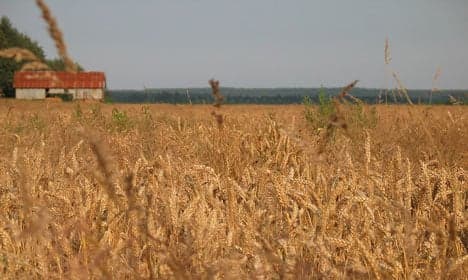Low-quality Danish grain gets dropped worldwide

With the quality of Danish grain at an all-time low, foreign consumers are now actively avoiding Danish goods when ordering EU wheat.
Orders for European wheat from other parts of the world are now beginning to come with “Danish excluded” requests as news of Denmark’s low-protein wheat spreads through the global market, Finans reported on Sunday.
See also: Danish wheat quality at all-time low
“Previously customers have just ordered a quantity of EU feed wheat, for example a ship with 30,000 tonnes. But now we are beginning to hear that customers in Asia for example are ordering a certain quantity of EU grains but along with the order comes the addition ‘Danish excluded’ - in other words, the customers are explicitly insisting on not receiving Danish grains,” Jesper Pagh, the group vice president of DLG, told Finans.
The DLG Group is one of Europe’s biggest agricultural companies and a major exporter of European seed, feed and grain.
“In other instances, the customers will accept that the grain is from Denmark but only if they can get an extra discount in price,” Pagh added.
Studies carried out by the Danish Pig Research Centre (Videncentret for Svineproduktion) in September showed that Danish grain protein content, wheat’s most important quality indicator, has dropped to 8.4 percent, the lowest level ever.
According to the Danish Agriculture and Food Council (Landbrug & Fødevarer), the quality of Danish wheat has been on a steady decline since the introduction of fertiliser limits in the 1990s.
“The Danish rules mean that we can’t give the grain the amount of fertiliser that the plants actually need. That results in a gradual depletion of the ground’s nitrogen reserves, thus impoverishing the soil. As a consequence, the quality gets lower and lower,” council spokesman Torben Hansen told Jyllands-Posten.
Agribusiness company Danish Agro also reported that its customers are avoiding Danish grain. It said that in 2014, German wheat contained 27 percent more protein than that produced in Denmark.
Comments
See Also
Orders for European wheat from other parts of the world are now beginning to come with “Danish excluded” requests as news of Denmark’s low-protein wheat spreads through the global market, Finans reported on Sunday.
See also: Danish wheat quality at all-time low
“Previously customers have just ordered a quantity of EU feed wheat, for example a ship with 30,000 tonnes. But now we are beginning to hear that customers in Asia for example are ordering a certain quantity of EU grains but along with the order comes the addition ‘Danish excluded’ - in other words, the customers are explicitly insisting on not receiving Danish grains,” Jesper Pagh, the group vice president of DLG, told Finans.
The DLG Group is one of Europe’s biggest agricultural companies and a major exporter of European seed, feed and grain.
“In other instances, the customers will accept that the grain is from Denmark but only if they can get an extra discount in price,” Pagh added.
Studies carried out by the Danish Pig Research Centre (Videncentret for Svineproduktion) in September showed that Danish grain protein content, wheat’s most important quality indicator, has dropped to 8.4 percent, the lowest level ever.
According to the Danish Agriculture and Food Council (Landbrug & Fødevarer), the quality of Danish wheat has been on a steady decline since the introduction of fertiliser limits in the 1990s.
“The Danish rules mean that we can’t give the grain the amount of fertiliser that the plants actually need. That results in a gradual depletion of the ground’s nitrogen reserves, thus impoverishing the soil. As a consequence, the quality gets lower and lower,” council spokesman Torben Hansen told Jyllands-Posten.
Agribusiness company Danish Agro also reported that its customers are avoiding Danish grain. It said that in 2014, German wheat contained 27 percent more protein than that produced in Denmark.
Join the conversation in our comments section below. Share your own views and experience and if you have a question or suggestion for our journalists then email us at [email protected].
Please keep comments civil, constructive and on topic – and make sure to read our terms of use before getting involved.
Please log in here to leave a comment.